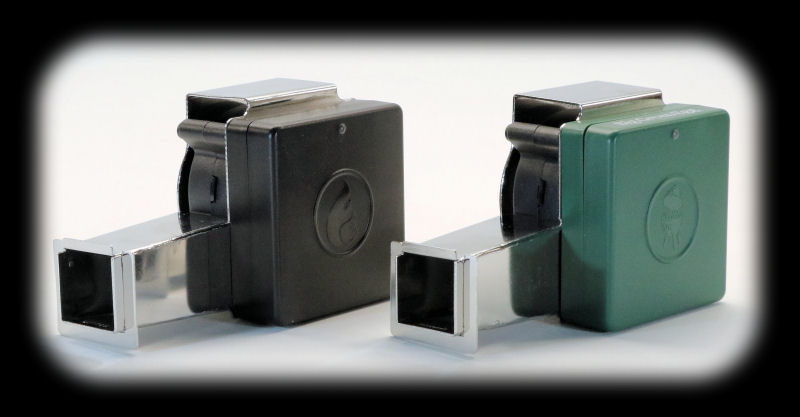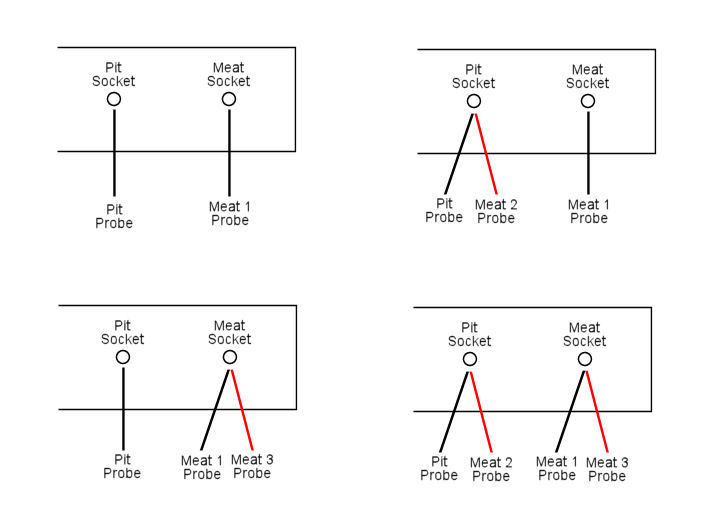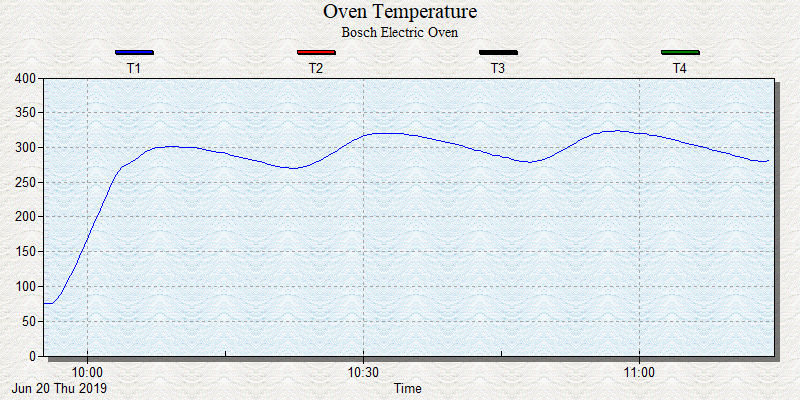 |
 |

There is no display on the Flame Boss 400 or the EGG Genius. There is only the single LED located on the side of the controller which lights up to indicate that you are connected to a network.
The WiFi status of the controller is indicated using the following LED behaviors. (Dont' worry. We'll explain these WiFi modes in a later section.):
All the connections are on the bottom edge of the control unit. From left to right are the plugs for the power cord, pit probe and meat probe. Also, between the connections for the pit and meat probes, you can see a small hole. Inside the hole is the reset button which can be pressed by using a paper clip.
  As we just showed you, there is a small hole between to the plugs for the temperature probes. Inside is the reset button. There are two things you can do with the reset button:
  The Flame Boss 400 and EGG Genius are powered by 12V DC. They come with a power adapter that can be used with 100-240 VAC, 50-60 Hz. The power adapter has a 5-foot cord. The power adapters for the two controllers are identical. Since the units have a standard 5.5mm 12V barrel socket on it, you also have a number of alternatives for powering the units. There is a 12V rechargeable power supply available from Flame Boss. You can also use an automobile jump start battery with a cigarette plug to power the units. And another alternative is the Auber Instruments 12V DeWalt Battery Pack Adapter that we recently reviewed.
The Flame Boss 400 and EGG Genius both come with two temperature probes, one for the pit and one for the meat. These probes have a braided stainless steel cable and should be good up to 475°F. (Note that there are different limits stated in different locations. The literature that comes with both controllers, does state that they are intended to be used at 400°F or less.) Notice that the meat probes have a color coded piece of tubing on the probe end of the cable. The color of the tubing matches the color of the plug to help sort out which cable is which. Be careful not to kink the cables and it is probably wise to protect any junctions between cables and probes from moisture. There are also optional temperature probes available separately from Flame Boss with PTFE (teflon) coated cables. They are a little less tolerant of heat, but incredibly easy to coil up without kinking the cables. The probe and the wire should be shielded from direct radiation from a hot fire. Do not let it come into direct contact with flames. If you need to shield the wire, you can place a layer of aluminum foil beneath it. Also, having the pit probe itself exposed to direct radiant heat can cause it to register a temperature which is higher than the air temperature in the cooker, and thus fool the controller into cutting back on the fire. An alligator clip is provided with the pit probe which you can use to clip the probe to your dome thermometer or the food grid, as you see fit.
Unlike many of the controllers on the market, Flame Boss probes are not thermocouples. They are platinum RTD sensors. What's that? Well, if you don't want to know skip the next 3 paragraphs. First of all, a thermocouple works on the Seebeck effect. When two ends of a conductor (wire) are at different temperatures, a voltage is created between the two ends. The magnitude of the voltage depends on the temperature difference between the two ends. The magnitude of the voltage also depends on the metal that the wire is made from. If you take two conductors made from different materials, there will be a different voltage created in each conductor. Different types of wire will thus generate different voltages for the same temperature difference. Then if you connect the two conductors at one end, the two voltages will add producing a voltage across the two conductors that varies with temperature. With me? If you know the materials, then you know the voltage generated for each temperature and this then gives you the DIFFERENCE in temperature between the two ends of the pair of conductors. Finally, you put a thermistor inside the meter that the probe plugs into to tell you the temperature of that end of the pair of conductors. Voila! You know the temperature of one end of the pair of wires, and you know the temperature difference between the two ends. Therefore you know the temperature of the other end! Simple, eh?Still with us? Good. One note of warning before we proceed. The plugs used on these probes are the same as the plugs used on probes made by at least one other manufacturer of temperature controllers. Thermocouples and RTD probes are not plug compatible, so just because the plug looks the same, don't be tempted to use the probes from another manufacturer. EGG Genius Support For Multiple Meat Probes And now we come to the most important difference between the Flame Boss 400 and the EGG Genius. Specifically, the ability to add up to two additional meat temperature probes to the EGG Genius controller. The EGG Genius has different temperature probe jacks which allow the use of optional y-cables that plug into the EGG Genius controller. The Flame Boss 400 doesn't have these special jacks and therefore you cannot use the y-cables to add more probes. Using two y-cables, you now have four sockets for temperature probes. All Flame Boss temperature probes appear to work with the y-cables as we used one of the original Flame Boss 100 probes and it was recognized. Y-cables and additional food probes can be purchased separately from Flame Boss. Here is a photo of one of these y-cables. Note that one wire is labeled "M2/M3". The photo doesn't show it, but the other wire is labeled "Pit/M1". This will help you figure out which probe is which when you hook them up to the controller.
Here's a handy dandy graphic to help you figure out which probe goes where if you use one of the four possible configurations of y-cables:
 It is worth noting that you can plug and unplug the meat and pit probes at any time without having to cycle power on the unit. The probes will simply appear and disappear from the display when you plug and unplug them. Also, whichever App you decide to use (Flame Boss or EGG Genius), it will show entries for the Meat 2 and Meat 3 probes regardless of whether or not you have Y-cables and extra probes plugged in. (With the Flame Boss 400, you will only see one entry for a meat probe. We'll show you this later when we show you some of the App screens.) We measured the room temperature and the temperature of boiling water using the Flame Boss 400 and EGG Genius controllers. Using our boiling point calculator to determine the boiling point of water in our locaton (211.8°F), we then measured the temperature of boiling water with each of the probes:
As you can see, both controllers recorded room temperatures that were within 1.0°F or less of the actual room temperature. As you can also see, the same was true for the Flame Boss 400 when measuring the temperature of boiling water. The EGG Genius pit probe was off by less than 2.0°F. Frankly, this really isn't a concern. All the probes were within the error range for a platinum RTD probe except for the EGG Genius pit probe, and even that probe was very close to the being within the error range. And of course, 2.0°F is more than enough accuracy to control the temperature of a cooker. And compared to the 50°F swing that is typical of most kitchen ovens, 2.0°F is a tiny blip. How tiny? Well here is how well our $2200 Bosch oven holds 300°F:
 That's a 43°F swing on the last oscillation. Again, an error of a few degrees on your pit temp is irrelevant. As we previously explained, RTD sensors require no calibration, so there is no calibration procedure. If your probes all consistently read off by a significant amount, you should contact Flame Boss support to investigate. | |||||||||||||||||||||||||||||||
You can support this website by shopping at The Naked Whiz Website Store and Amazon.com
|
.